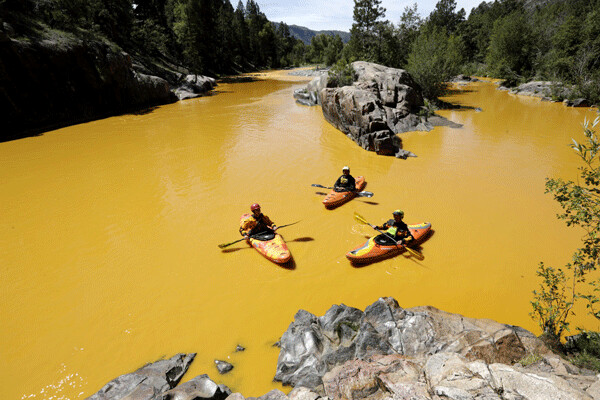A Uranium Mining Test for EPA

Another test of the Environmental Protection Agency (EPA) and its anti-environmental chief Scott Pruitt is underway, and the result will trumpet the agency’s uranium footprint for decades to come. Will EPA’s Congressional mandate be replaced by Everybody’s Poison Adventures?
Now a proposed EPA rule change could put the uranium industry “on a path to a full accounting of the environmental harms and costs of the nuclear fuel chain,” writes Geoff Fettus, a senior attorney at the Natural Resources Defense Council, which submitted 60 pages of technical and legal comment on the proposed rules. The comment period just ended, and more than 44,000 citizens and groups weighed demanding justice for the affected communities and long-term protections from future mining.
The rule changes, titled “Health and Environmental Protection Standards for Uranium and Thorium Mill Tailings,” regard water quality, clean-up requirements, and new mining practices. First proposed late in the Obama Administration, a revised set of rules put up by EPA’s Pruitt and Co. weaken protections to groundwater included in the first proposal. The weaker rules would shorten the duration of long-term monitoring after mining concludes, and the lower standards for setting original baseline groundwater quality.
Communities and drinking water across the western U.S., from Texas to Wyoming, have for 70 years been contaminated by uranium mining. Uranium is a natural radioactive and toxic heavy metal, and there are some 15,000 abandoned uranium mines and mills in the west, mostly located on Native North American Indian Reservations. Mountains of abandoned uranium ore tailings have been left in the open air.
Since uranium mining is mostly done in dry, windy desert areas, radioactive dust is easily dispersed by winds and rains. Surface and underground waters are then contaminated by uranium and its byproducts including lead 210 and polonium 210. These radioactive materials also accumulate in the plants and sediments of rivers, ponds and lakes.
Uranium mine and mill workers suffer similar illnesses and elevated death rates from cancers, kidney and breathing diseases known to be associated with the radiation and heavy metal toxins released by uranium mining. Yet the polluting companies have done little to compensate sickened workers or clean up their contaminated sites, even after disasters like the worst radioactive spill in U.S. history -- the 1979 uranium mine dam collapse on the Navajo Nation near Church Rock, NM that poured 94 million gallons of radioactive waste to the Puerco River, poisoning drinking water in downriver communities.
Current EPA rules for uranium mining endanger public health and the environment, the Defense Council’s Fettus says, because they don’t address “in-situ leaching” (ISL), also known as acid leach mining which employs highly corrosive and deadly sulfuric acid. Fettus wrote in an Oct. 16 letter that “regulations promulgated decades ago did not contemplate ISL uranium recovery and its associated harms,” and are “wholly inadequate to the task of protecting scarce western US groundwater resources.”
Most acid leach uranium mining in the US has taken place in the “inter-mountain west” and new or expanded acid mining is in the works, especially with new EPA chief Pruitt and the president having zero tolerance for pesky safe water regulations. The desert southwest is seeing rapid population growth, prolonged droughts, and simultaneous resource extraction projects (like coal bed methane drilling). All this causes severe competition for surface and underground water which these industries use in great quantities. Permanent contamination - that is, the total loss - of underground freshwater (aquifers) has been caused by acid leach mining and will again, unless stringent rules are adopted and enforced.
Attorney Fettus sounded an alarm in his letter, noting, “Any attempt by EPA, under the administration of industry lobbyist Scott Pruitt, to further weaken the standards violates federal law and contradicts the established science of uranium recovery and its impact on groundwater.” Contact the Natural Resources Defense Council (nrdc.org) to enlarge your efforts as a water protector.